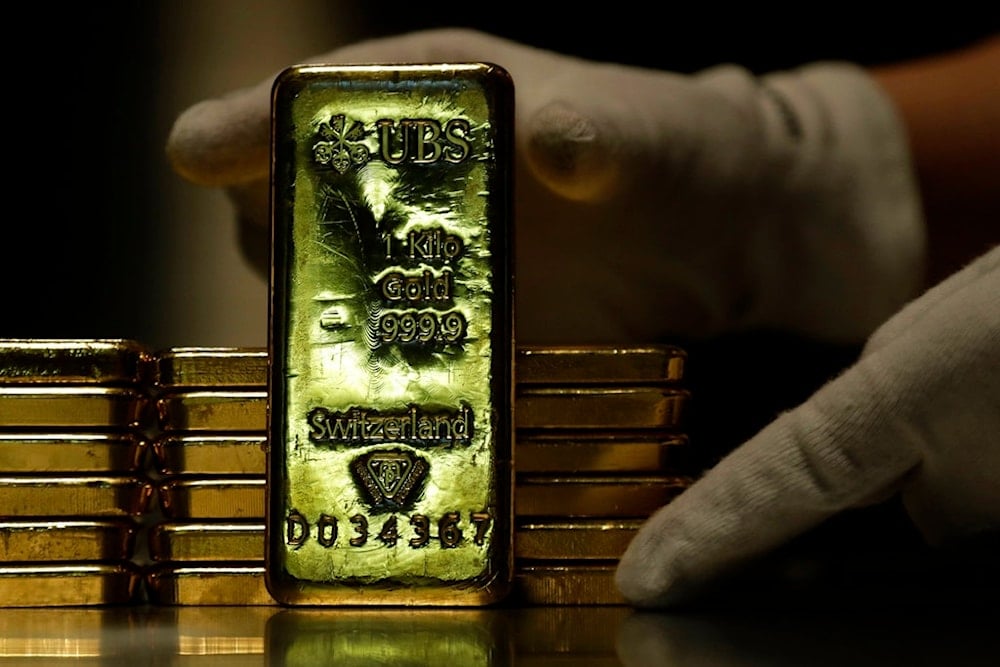Gold market sees unusual pricing shift as central banks stockpile
A rare convergence in gold's spot and futures prices, driven by relentless central bank buying, is signaling potential physical supply shortages and shifting market dynamics.
-

Employees of ProAurum gold house prepares 1 Kg gold bars of 999.9 purity in the safe deposit boxes room in Munich, Germany, Thursday, Dec. 13, 2018 (AP Photo/Matthias Schrader)
A notable shift is underway in the gold market, with the price for immediate delivery reaching parity with futures contracts, a rare occurrence that indicates powerful underlying demand for the physical metal. This comes even as spot prices have faced recent pressure, falling for four consecutive days to around $4,011 amid a strengthening US dollar and fading expectations for a near-term Fed rate cut.
This phenomenon, known as "zero contango" in trading terminology, is emerging alongside persistent acquisitions by central banks worldwide, sparking concerns over the adequacy of available supply. This structural demand from central banks is a key reason many experts remain optimistic about gold's long-term future, even after its recent 8% pullback from October's record high.
Analysts indicate that this market condition stems from current gold prices being bid up to the level of contracts for delivery next month. This move is partly driven by investor sentiment anticipating that impending US interest rate reductions will amplify physical demand for the commodity.
However, this market expectation stands in stark contrast to recent communications from the US Federal Reserve. Officials have been pushing back against the notion that the central bank will initiate another rate cut in December, with the probability of a cut plummeting from nearly 100% to just 42%. This dissonance is creating a tug-of-war; while physical demand and long-term bullishness underpin the market, short-term price action is being weighed down by the "higher-for-longer" rate narrative and related profit-taking.
Central Banks Accumulating Gold
According to an analysis last week from Discovery Alert, which explored sovereign demand for the precious metal, the Fed's messaging is unlikely to deter the central banks that have been actively accumulating gold.
“The strategic nature of central bank buying differs significantly from speculative market activity,” the analysis said. “These purchases represent long-term portfolio allocation decisions driven by monetary policy considerations such as geopolitical uncertainty and de-dollarization trends rather than short-term price movements. Central bank demand provides a foundation of sustained buying pressure that supports higher price levels over extended periods.”
Projections from JPMorgan appear to confirm this sustained demand. The bank forecasts central bank demand for gold will reach 566 tonnes in 2026, building upon the estimated 900 tonnes of purchases anticipated for this year. This aligns with the bullish long-term outlook from major banks like Goldman Sachs and Bank of America, which project prices of $4,900 and $5,000 per ounce by end-2026, respectively.
In Tuesday's trading activity, the most active gold futures contract for December delivery on New York’s Comex was recorded at $4,076.84 an ounce. This represented a modest daily gain. The market environment remains atypical, as futures normally trade at a consistent premium of $20 to $40 above the spot price. This compression of the spread to near zero, against a backdrop of short-term price declines, highlights the powerful and competing forces currently at play in the gold market. All eyes are now on the Fed's December 10 meeting for the next major directional cue.
Read more: Gold surges to a two-week high amid weak US data, Fed cut

 3 Min Read
3 Min Read








